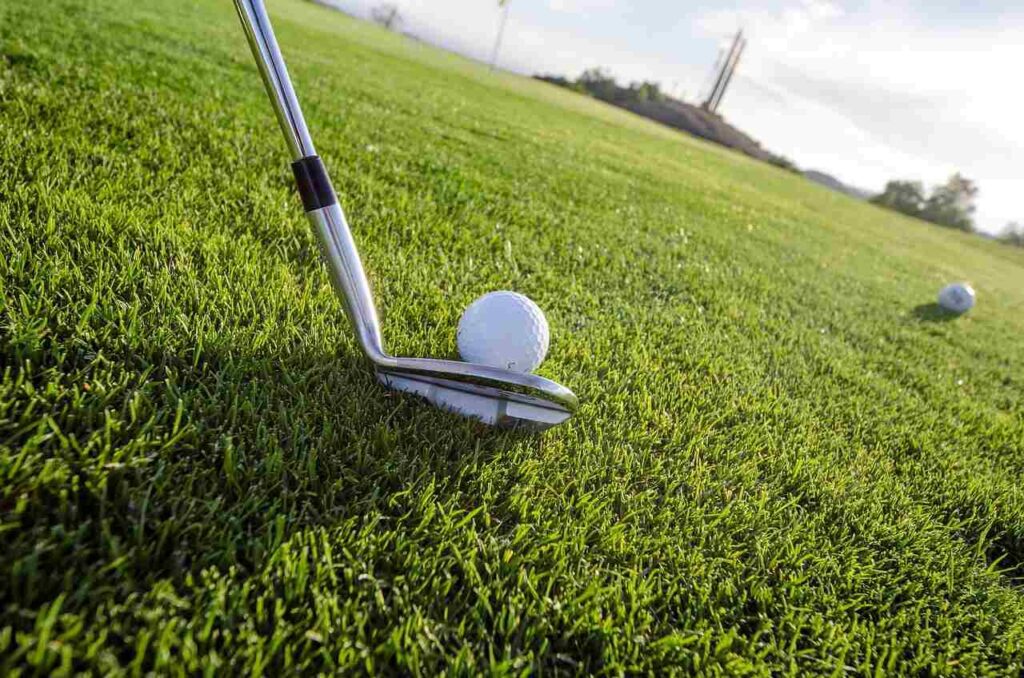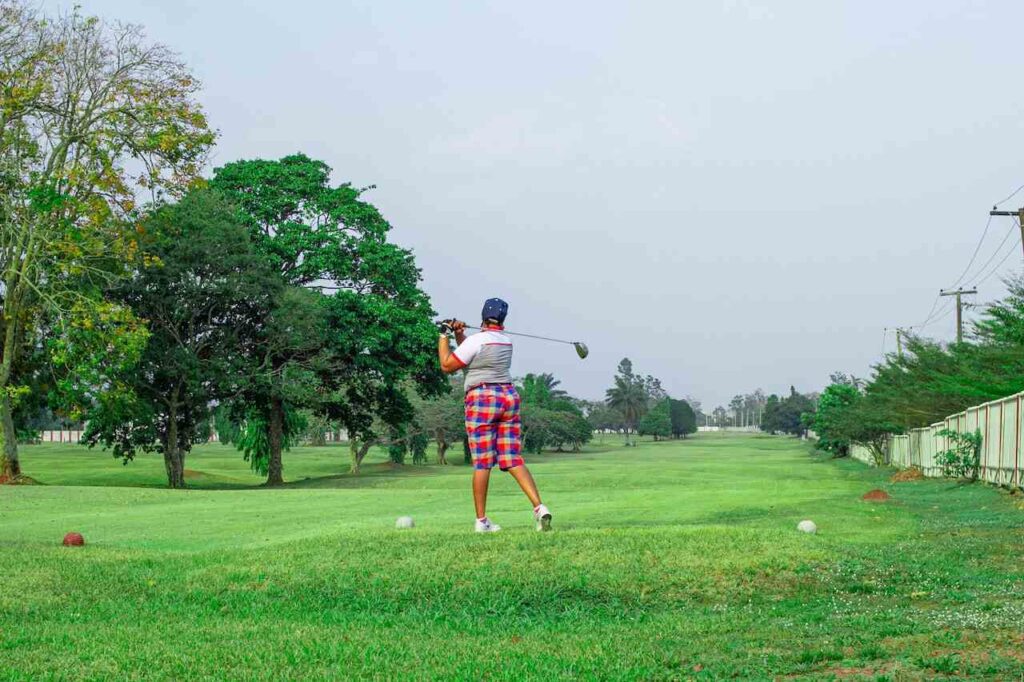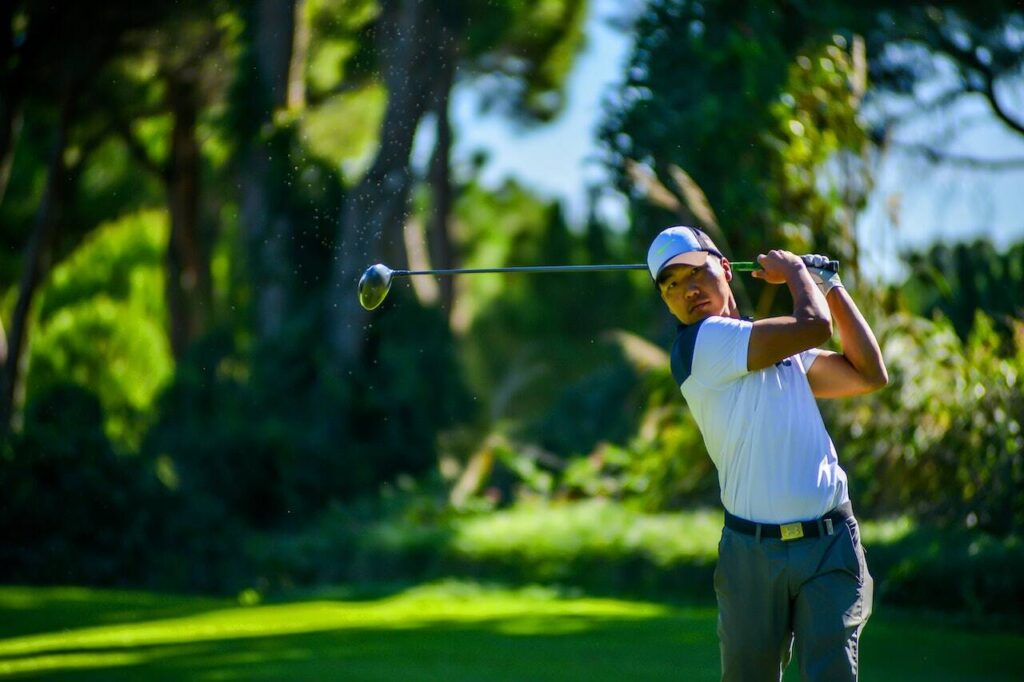Iron play is a crucial aspect of golf, and mastering it can significantly improve your performance. Precision shots from the fairway can set you up for birdie opportunities and help you avoid unnecessary mistakes. Here’s a comprehensive guide to fine-tuning your iron play and achieving consistent, accurate shots from the fairway.
Table of Contents
Understanding the Basics of Iron Play
Iron shots are typically used for approach shots, where accuracy and control are paramount. Unlike driving, where distance is the primary focus, iron play demands precision to navigate hazards and position the ball optimally on the green.
Key Components of Effective Iron Play
Grip
A proper grip ensures control and accuracy. Place your left hand (for right-handed golfers) on the club first, with the thumb running down the shaft. Cover this thumb with your right hand, ensuring that the V’s formed by your thumbs and forefingers point towards your trailing shoulder. A neutral grip helps produce a straight ball flight.
Stance and Alignment
Your stance should be shoulder-width apart, with your weight balanced evenly on both feet. Position the ball slightly forward of center for mid-irons and closer to the center for shorter irons. Align your feet, hips, and shoulders parallel to the target line to ensure a straight shot path.
Posture
Maintain a slight bend in your knees and tilt forward from your hips, keeping your back straight. Your arms should hang naturally, with your hands positioned just ahead of the ball. This posture promotes a solid, consistent contact with the ball.
Technique for Precision Iron Shots
Backswing
During the backswing, focus on a smooth, controlled motion. Rotate your shoulders fully while maintaining a stable lower body. Keep your left arm straight but not rigid, and hinge your wrists naturally. This coiling action stores energy, which can be unleashed during the downswing.
Downswing
Initiate the downswing by shifting your weight to your front foot and rotating your hips towards the target. Maintain your wrist hinge until just before impact to create lag, which generates power and control. Focus on a smooth, accelerating motion through the ball.
Impact
At impact, your hands should be ahead of the ball, promoting a downward strike. This ensures that you compress the ball against the turf, leading to a clean, powerful shot. Your body should be in a balanced, athletic position, with your hips rotated towards the target.
Follow-through
A complete follow-through is essential for a balanced, controlled shot. Allow your body to rotate fully, with your weight finishing on your front foot. Your arms should extend naturally towards the target, and your club should finish high.
Drills to Improve Iron Play
Alignment Drill
Place a club or alignment stick on the ground, parallel to your target line. Practice hitting shots while ensuring your feet, hips, and shoulders are aligned with the stick. This drill helps develop a consistent, accurate setup.
Divot Drill
Focus on making a divot after the ball, indicating a descending strike. Place a towel a few inches behind the ball and practice hitting shots without touching the towel. This drill promotes proper ball-first contact and helps eliminate fat or thin shots.
Tempo Drill
Use a metronome or count to develop a smooth, rhythmic swing. Focus on maintaining a consistent tempo from backswing to follow-through. A steady tempo helps ensure control and precision.
Distance Control Drill
Place targets at various distances on the range and practice hitting shots to each target. Vary your club selection and focus on controlling your distance and trajectory. This drill enhances your ability to judge and execute precise iron shots.
Mental Strategies for Iron Play
- Visualisation: Before each shot, visualise the ball’s flight path and landing spot. Picture a successful shot and focus on the target. Visualization helps improve focus and confidence.
- Routine: Establish a pre-shot routine that includes aligning your shot, taking practice swings, and setting up your stance. Consistency in your routine promotes confidence and reduces variability in your swing.
- Stay Positive: Maintain a positive mindset, even after a poor shot. Focus on the next opportunity and trust your practice and preparation. A positive attitude helps you stay relaxed and perform better under pressure.
Equipment Considerations
Club Fitting
Using properly fitted irons can make a significant difference in your performance. Ensure your clubs are suited to your height, swing speed, and playing style. Custom-fitted clubs can enhance accuracy and control.
Ball Selection
The type of ball you use can also impact your iron play. Balls designed for control and spin can help you achieve more precise shots. Experiment with different balls to find one that complements your iron play.
Conclusion
Fine-tuning your iron play involves mastering technique, practicing with purpose, and maintaining a strong mental game. By focusing on the fundamentals and incorporating the tips provided, you can achieve more precise and consistent iron shots from the fairway. Remember, improvement takes time and dedication. Embrace the process, refine your skills, and enjoy the journey to becoming a better golfer. Happy golfing!
The Best Iron Players on the PGA Tour – click here!

Unique FAQs: Fine-Tuning Your Iron Play
How can I ensure my ball position is correct for different irons?
For mid-irons (5-7 irons), position the ball slightly forward of center in your stance. For shorter irons (8-9 irons and wedges), place the ball closer to the center. This setup helps ensure proper contact and optimal ball flight. Consistency in ball position across your irons is key to developing a reliable swing.
What is the best way to maintain balance during my iron swing?
A stable stance and proper weight distribution are crucial for maintaining balance. Start with your weight evenly distributed between your feet. During the backswing, shift slightly to your back foot, and then transition smoothly to your front foot during the downswing. Keep your knees slightly bent and maintain a steady head position to promote balance.
How can I achieve a proper divot with my irons?
To take a proper divot, focus on hitting the ball first and then the turf. This descending strike compresses the ball and produces a clean shot. Practice drills like placing a towel a few inches behind the ball to ensure you are striking down on the ball and not hitting behind it.
What role does wrist hinge play in iron shots?
Wrist hinge creates lag in the downswing, which generates power and control. During the backswing, hinge your wrists naturally, and maintain this angle until just before impact. This stored energy is released through impact, promoting a crisp, powerful shot. Over-hinging or under-hinging can disrupt your swing path and reduce precision.
How can I improve my alignment for iron shots?
Use alignment sticks or place a club on the ground parallel to your target line. Align your feet, hips, and shoulders with this line to ensure consistency. Regularly checking your alignment during practice helps develop a routine that translates to more accurate shots on the course.
What is the importance of a full shoulder turn in iron play?
A full shoulder turn during the backswing allows you to store potential energy, which can be unleashed during the downswing. Aim for at least a 90-degree rotation of your shoulders, with your back facing the target. This coiling motion generates torque, leading to increased clubhead speed and better ball striking.
How can I control the trajectory of my iron shots?
Adjust your ball position and swing path to control trajectory. For higher shots, place the ball slightly forward in your stance and finish with a high follow-through. For lower shots, position the ball more towards the center and focus on a shorter, more controlled follow-through. Practicing different trajectories helps you adapt to various course conditions.
What drills can help improve my iron play consistency?
Effective drills include the Gate Drill, where you place two tees just wider than your putter head to ensure a straight stroke, and the Divot Drill, which focuses on making a divot after the ball to promote proper contact. The Tempo Drill, using a metronome to maintain a consistent swing rhythm, is also beneficial.
How does physical fitness impact iron play?
Physical fitness enhances stability, strength, and flexibility, all of which contribute to better iron play. Strengthening your core and lower body helps maintain balance and generate power. Flexibility exercises improve your range of motion, allowing for a fuller shoulder turn and better control.
How can mental strategies improve my iron shots?
Mental strategies such as visualization and maintaining a positive mindset are crucial. Visualize the shot you want to make, focusing on the ball’s flight and landing spot. Establish a consistent pre-shot routine to build confidence. Stay positive and trust your practice, even after a poor shot, to maintain focus and composure.
What equipment adjustments can enhance my iron play?
Custom-fitted irons tailored to your height, swing speed, and playing style can significantly improve your performance. Ensure your clubs have the correct lie angle and shaft flex. Additionally, using a golf ball designed for control and spin can help achieve more precise iron shots.
How can I practice effectively to improve my iron play?
Practice with a purpose by incorporating drills that target specific aspects of your iron play, such as alignment, divot control, and tempo. Spend time on the range hitting different distances and trajectories. Simulate course conditions and focus on accuracy rather than just distance. Consistent, focused practice leads to sustained improvement.



